Image of the Day: February 2012
Forecast: Tomorrow
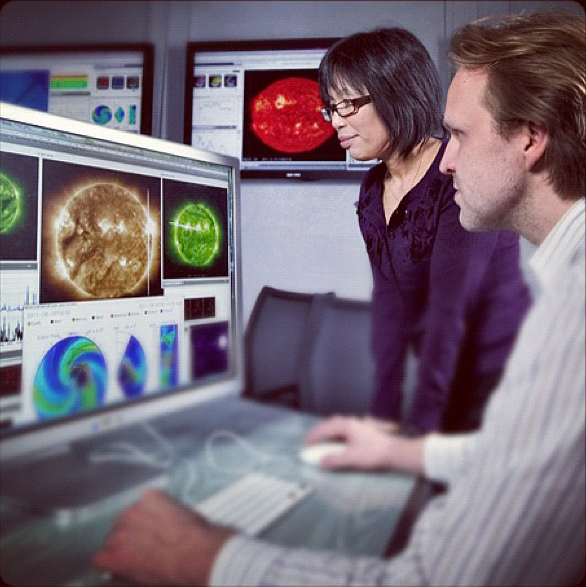
Wednesday, February 1, 2012: Chief space weather forecasters Yihua Zheng and Antti Pulkkinen of NASA’s Goddard Space Flight Center are helping to implement a computer technique called ensemble forecasting that will improve NASA’s ability to predict the impact of severe solar storms.
— Tom Chao
Vesta and Mercury Are All Right Tonight
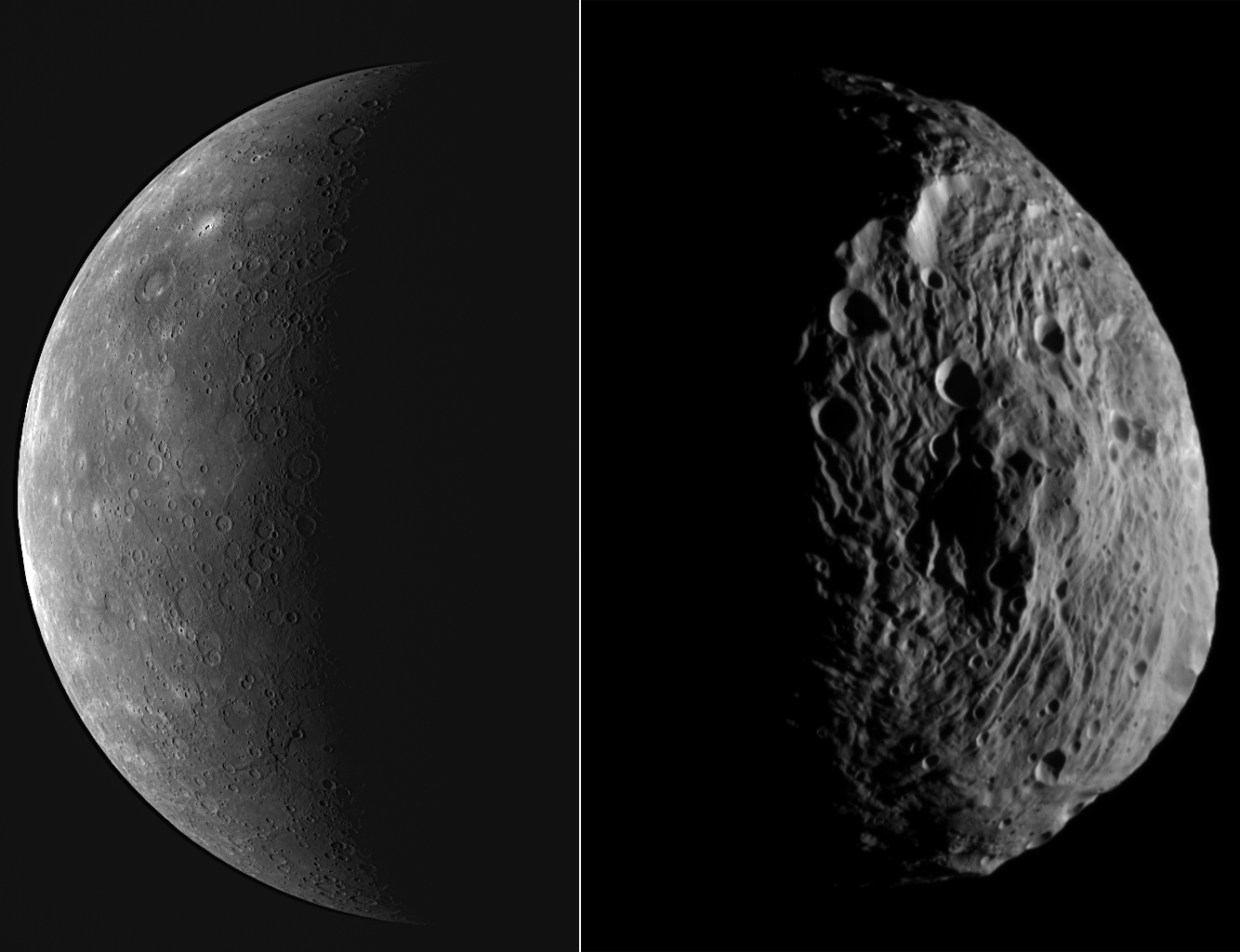
Thursday, February 2, 2012: Two images displayed together show the fruits of NASA’s labors. In 2011, MESSENGER spacecraft went into orbit around Mercury (left), and Dawn spacecraft orbited main-belt asteroid Vesta (right), sending back the images seen here. Both spacecraft were the first to orbit their respective subjects. MESSENGER and Dawn are missions in NASA's lowest-cost Discovery program. Vesta has a much more irregular shape than Mercury, as a result of Mercury's far larger gravity, which squeezed the planet into a sphere. Mercury possesses a mass about 1300 times greater than that of Vesta.
— Tom Chao
Galaxy Bar
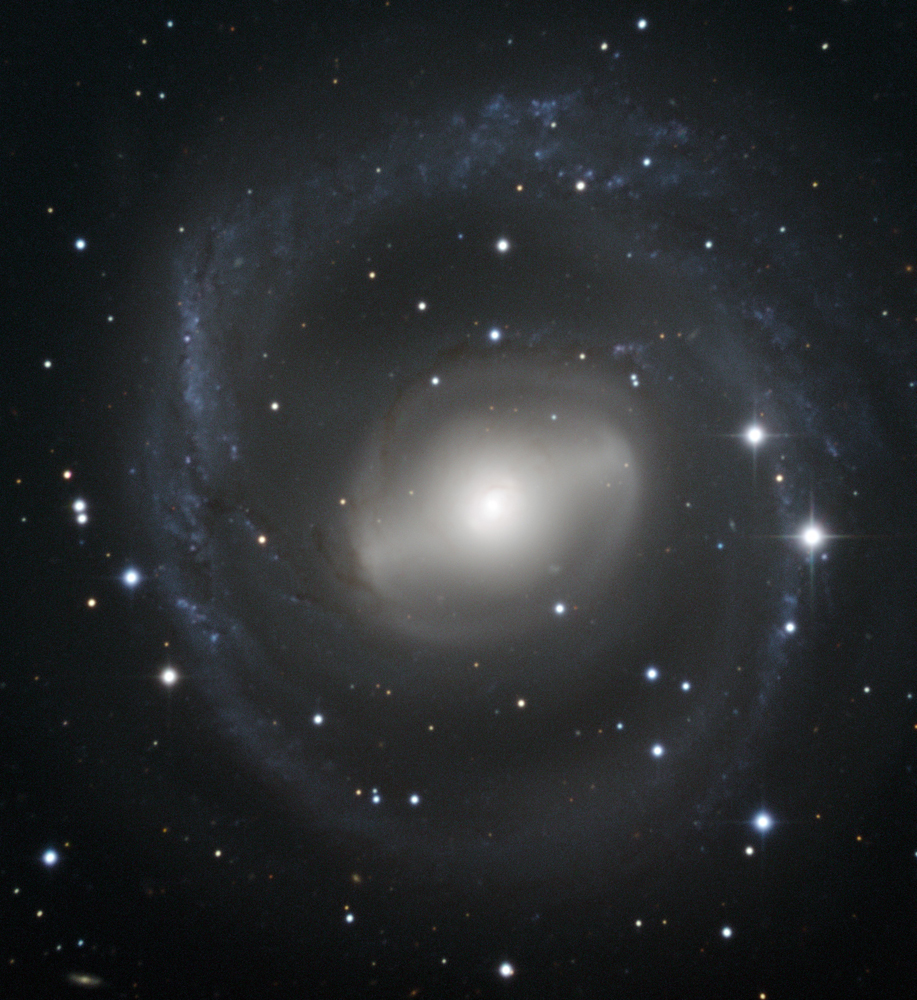
Friday, February 3, 2012: Galaxy NGC 2217 swirls in the constellation of Canis Major (The Great Dog). A distinctive bar of stars within an oval ring anchors the galaxy centrally. Further from the center, tightly wound spiral arms almost form a circular ring around the galaxy. Astronomers classify NGC 2217 as a barred spiral galaxy, and it lies nearly face-on to us. The bluish outer spiral arms indicate the presence of hot, luminous, young stars, born from interstellar gas clouds. The central bulge and bar appear yellower, due to the presence of older stars. Dark lanes of cosmic dust block out some of the starlight in the galaxy's arms and central bulge. The majority of spiral galaxies in the local universe, including our own Milky Way, are thought to possess a bar of some kind.
— Tom Chao
NuSTAR in the Sky
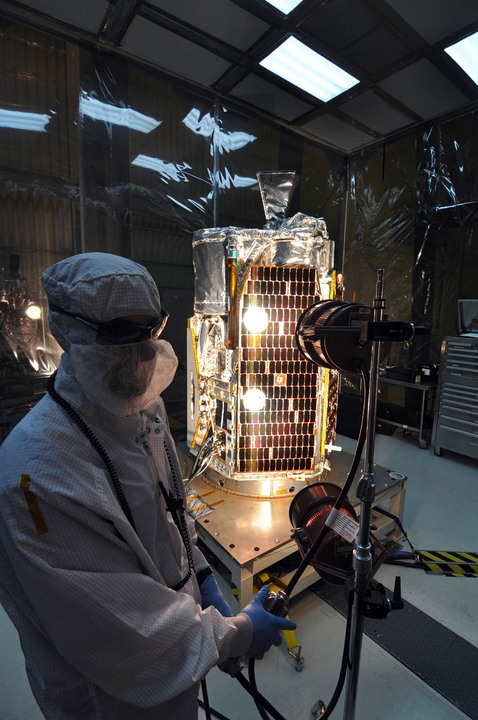
Monday, February 6, 2012: NuSTAR, The Nuclear Spectroscopic Telescope Array, will image the sky for the first time in the high energy X-ray (6-79 keV) region of the electromagnetic spectrum. Our view of the universe in this spectral window has been limited previously. NuSTAR is scheduled to launch March 14, 2012, from an aircraft operating out of Kwajalein Atoll in the Marshall Islands. Here, NuSTAR is seen undergoing a solar array illumination test. Image released via Twitter Feb. 3, 2012.
— Tom Chao
LBN 1022
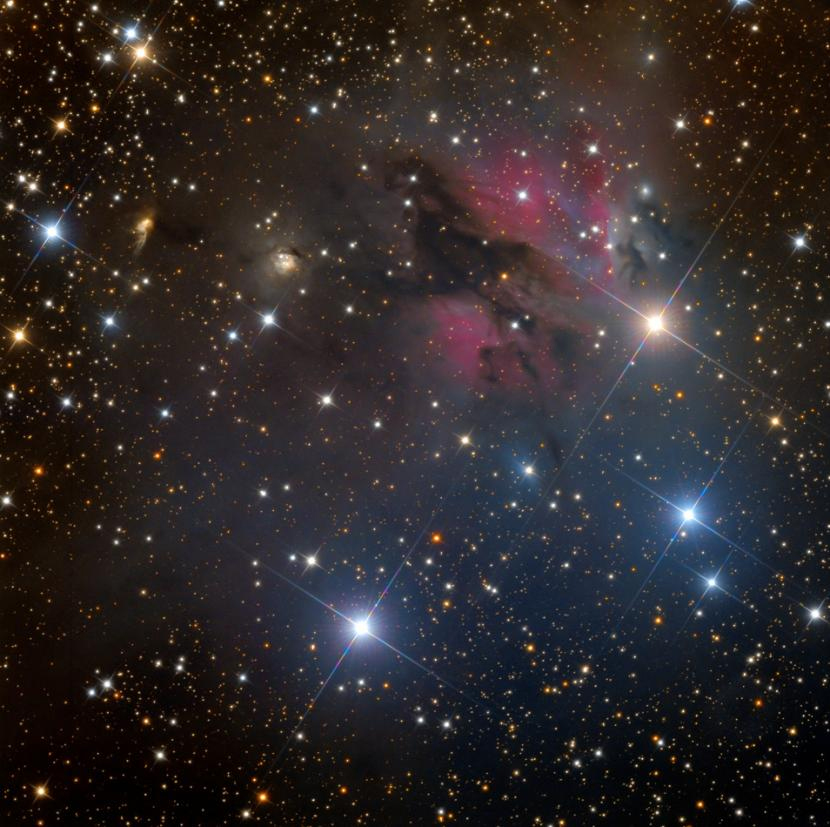
Tuesday, February 7, 2012: Astrophotographer Adam Block captured this image of nebula LBN 1022 in the constellation of Monoceros at the Mt. Lemmon Sky Center/University of Arizona in Nov. 2011.
— Tom Chao
I Just Want to Be in Your Panorama
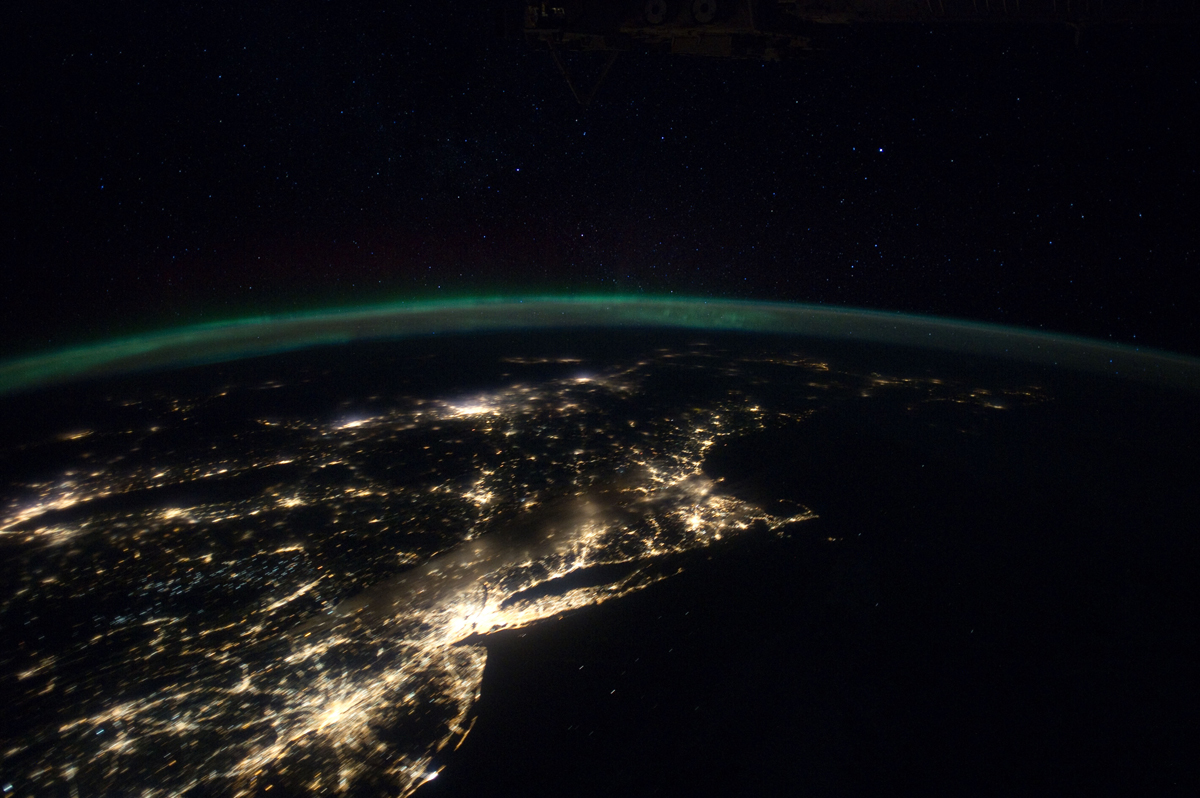
Wednesday, February 8, 2012: The East Coast of the United States glows at night, as seen from the International Space Station. This looks generally northeastwards with the Philadelphia-New York City-Boston corridor at bottom center. The western shoreline of Lake Ontario with Toronto lies on the left edge. Montreal, Quebec, Canada, gleams as the bright spot near the center. Atmospheric limb and light activity from the Aurora Borealis appear intertwined due to an optical illusion. Photo taken Jan. 29, 2012.
— Tom Chao
Eruption
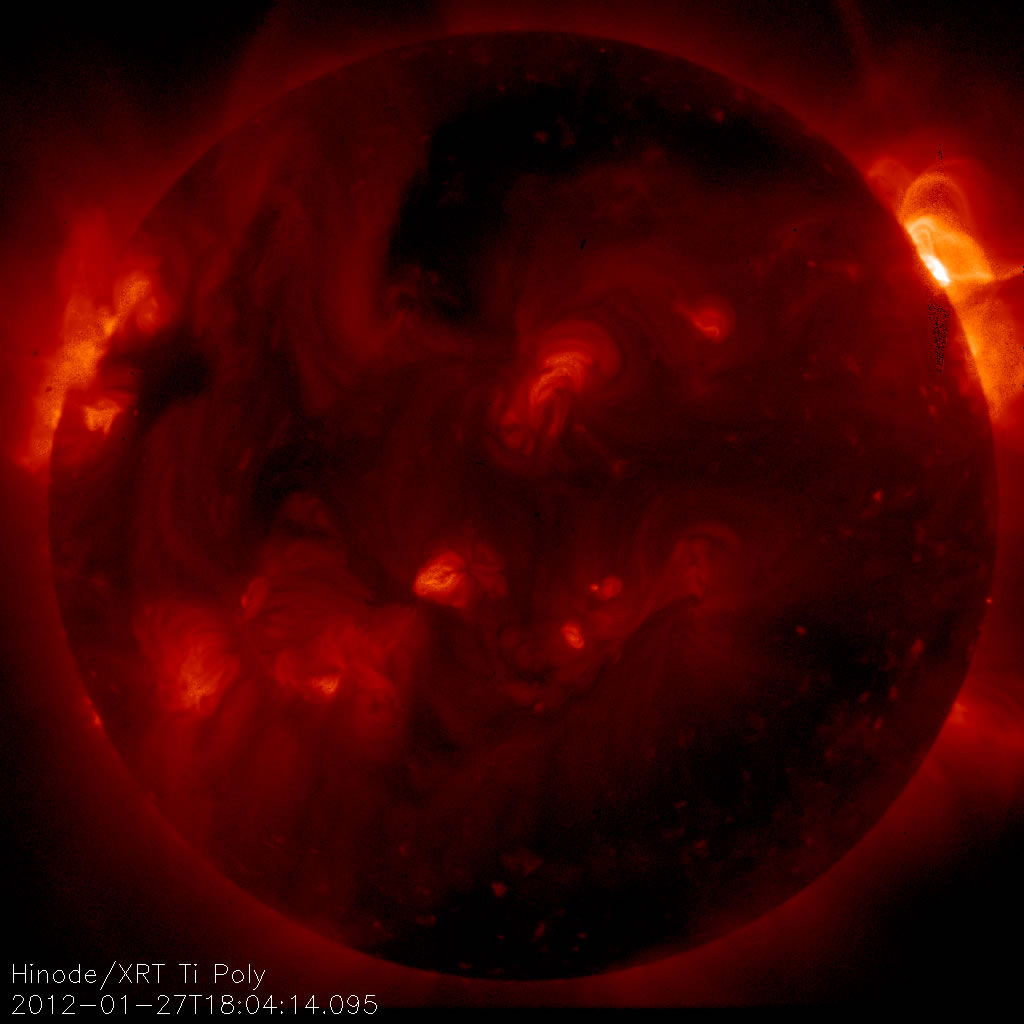
Thursday, February 9, 2012: On Jan. 27, 2012, a large X-class flare erupted from an active region on the sun, near the solar west limb. X-class flares represent the most powerful of all solar events. The X-ray telescope on Hinode spacecraft captured this image of the flare, showing an emission from plasma heated to greater than eight million degrees during the energy-release process of the flare.
— Tom Chao
Get the Space.com Newsletter
Breaking space news, the latest updates on rocket launches, skywatching events and more!
Here Come the Cold Jets
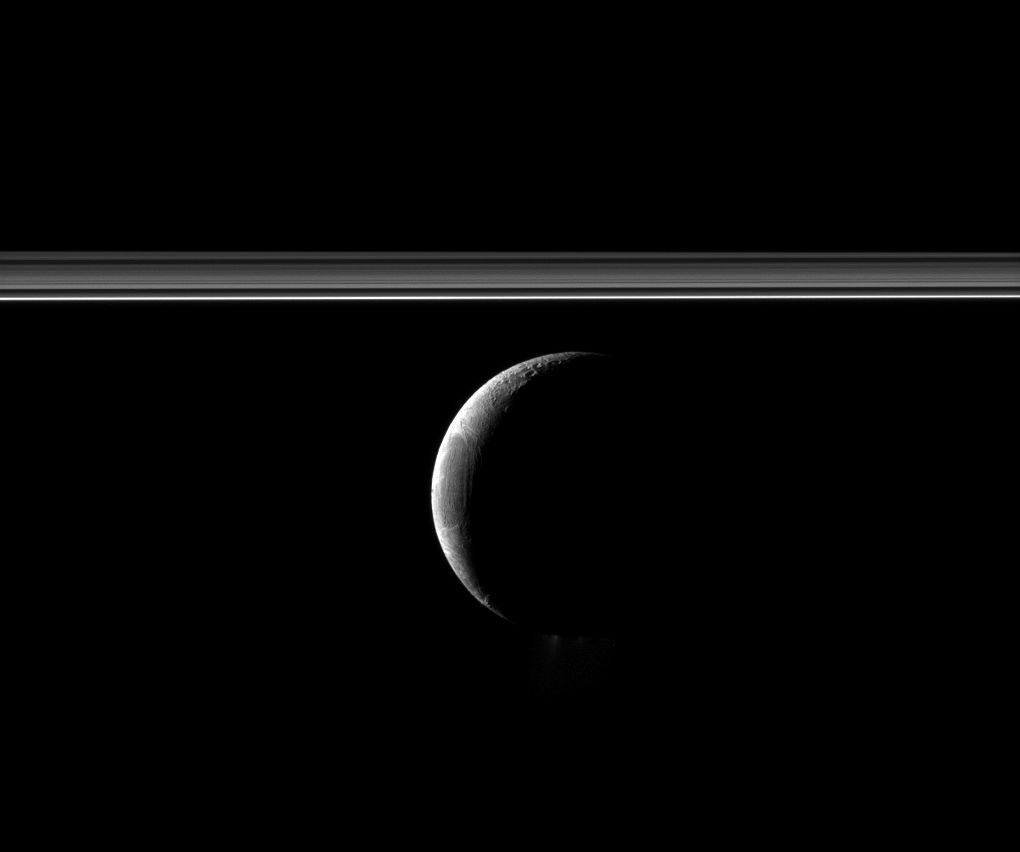
Friday, February 10, 2012: Cassini spacecraft took this visible-light image of a crescent Enceladus with Saturn's rings on Jan. 4, 2012. Jets of water ice emanating from the south polar region of the moon gleam faintly here, appearing as a small white blur below the unseen south pole, down and to the right of the moon's crescent. (The image's contrast was enhanced to increase the visibility of the jets.)
— Tom Chao
The Shape I'm In
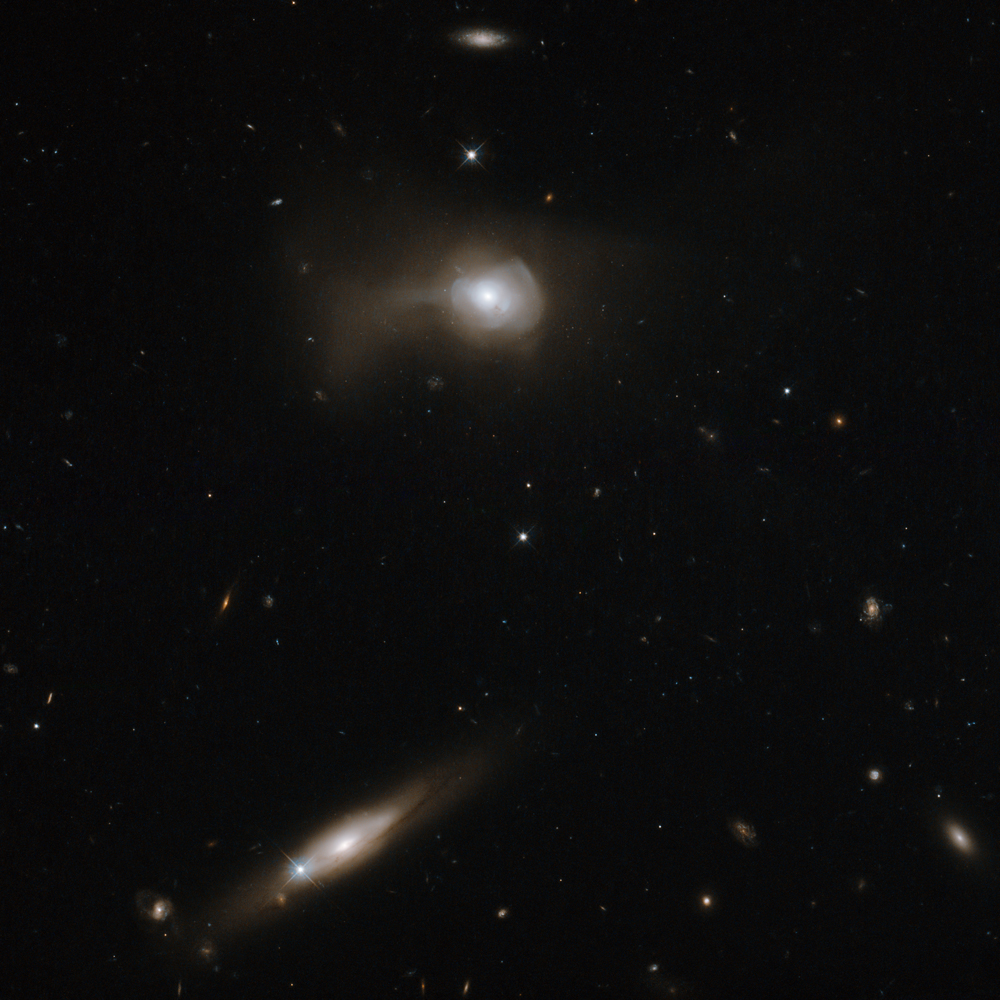
Monday, February 13, 2012: The Hubble Space Telescope shows three galaxies in this image. Two, including the tilted galaxy at the bottom and the small galaxy at top center, show spiral arms around a bright nucleus, like our own Milky Way galaxy. However, Markarian 779, the galaxy at the top of this image, possesses a distorted appearance, likely the product of a recent galactic merger between two spirals. This collision destroyed the spiral arms of the galaxies and scattered much of their gas and dust. Image released February 6, 2012.
— Tom Chao
I've Been Around For a Long, Long Years
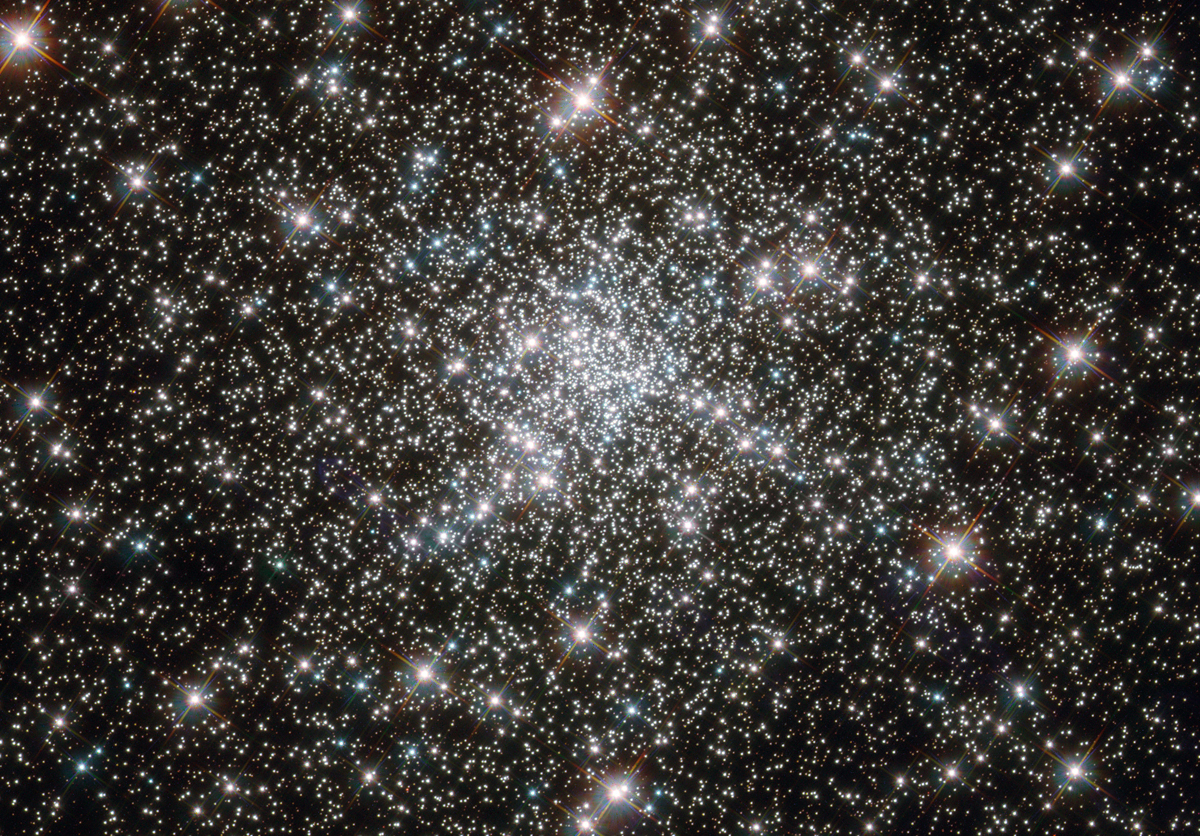
Tuesday, February 14, 2012: NGC 6752 globular cluster has blazed for over 10 billion years as one of the most ancient collections of stars known. It has existed over twice as long as our solar system. NGC 6752 contains a high number of "blue straggler" stars, the origin of which remains a mystery. These stars display characteristics of stars younger than their neighbors. Collisions between stars in this turbulent area could produce the blue stragglers that are so prevalent. NGC 6752 lies 13,000 light-years from Earth.
— Tom Chao
It Keeps Me Stable for Days
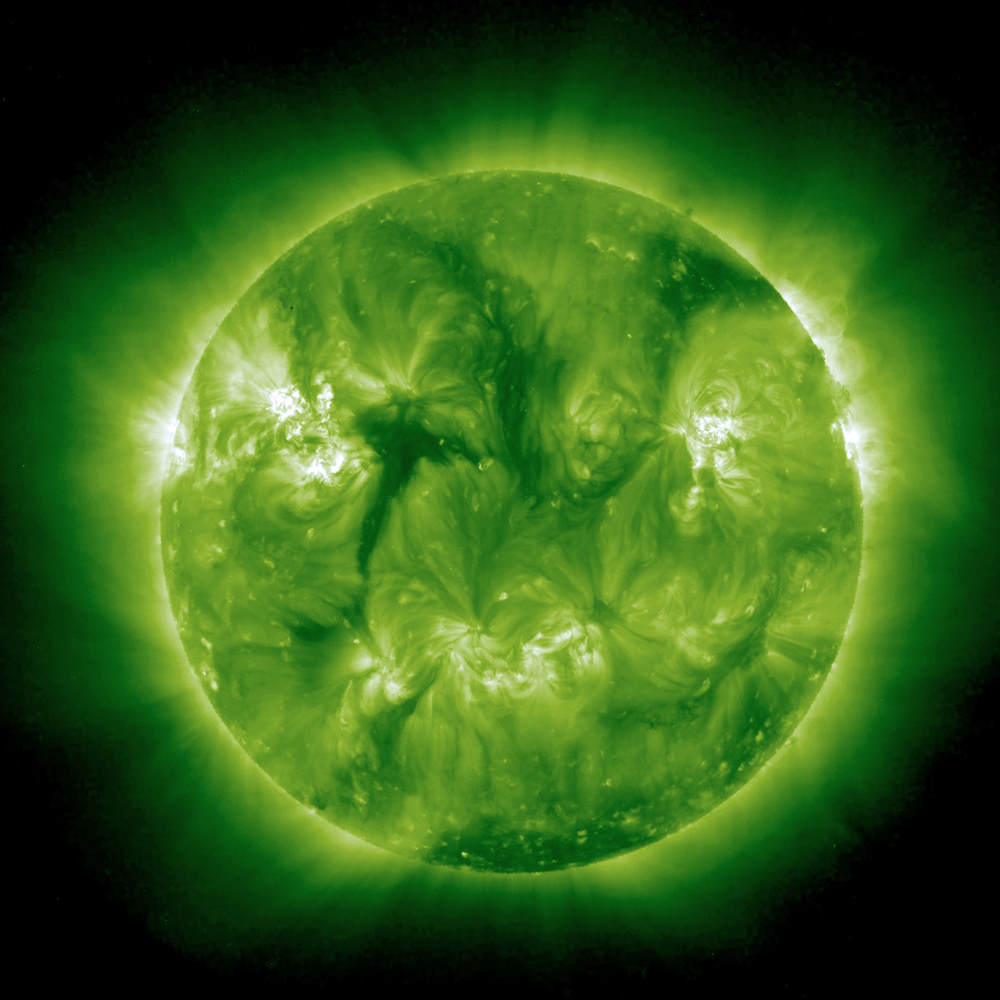
Wednesday, February 15, 2012: A very long filament remained stable above the sun over a two-day period, Feb. 6-7, 2012. The filament appears here in this extreme UV light image taken by the STEREO (Ahead) spacecraft as the darker U-shaped strand, curving down from left of the top down toward the center, then back up to the right. The cooler material in the filament doesn't emit radiation at this wavelength, unlike its hotter surroundings in the corona, thus appearing dark. (The T-shaped structure to the left of the filament is a coronal hole.)
— Tom Chao
Join our Space Forums to keep talking space on the latest missions, night sky and more! And if you have a news tip, correction or comment, let us know at: community@space.com.

Space.com is the premier source of space exploration, innovation and astronomy news, chronicling (and celebrating) humanity's ongoing expansion across the final frontier. Originally founded in 1999, Space.com is, and always has been, the passion of writers and editors who are space fans and also trained journalists. Our current news team consists of Editor-in-Chief Tariq Malik; Editor Hanneke Weitering, Senior Space Writer Mike Wall; Senior Writer Meghan Bartels; Senior Writer Chelsea Gohd, Senior Writer Tereza Pultarova and Staff Writer Alexander Cox, focusing on e-commerce. Senior Producer Steve Spaleta oversees our space videos, with Diana Whitcroft as our Social Media Editor.









